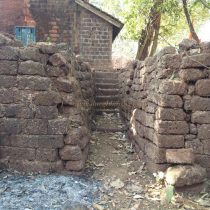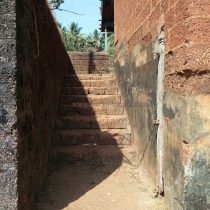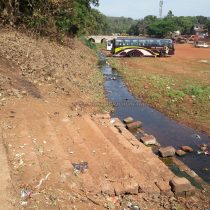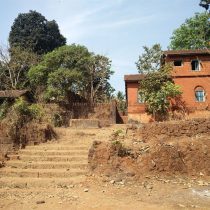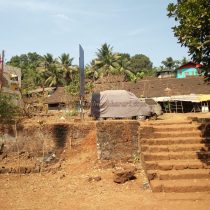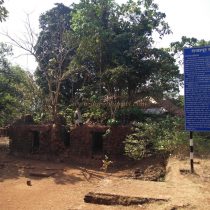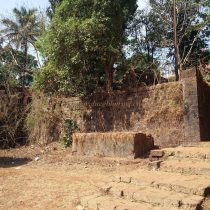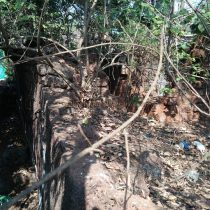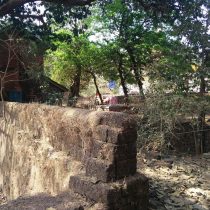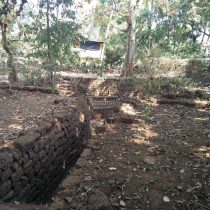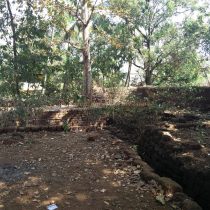RAJAPUR
TYPE : COASTAL FORT
DISTRICT : RATNAGIRI
HEIGHT : 0
GRADE : EASY
Nature has bestowed a special splendor of beauty on Rajapur, which is at a distance of 60 km from Ratnagiri city. The port of Rajapur is situated at the mouth of the creek where the river Arjuna meets the sea and is 30 km from the sea. Being a long distance away from the sea, it was considered the safest port at that time. Goods from the wharf markets used to come to Rajapur port through Anuskura wharf. From there, the goods were transported by boat to Arabia and other ports. In 1648, when this part was under the control of Adishah, the British built a warehouse at this place. To protect the goods in the warehouse, they built a fort with ramparts and bastions with cannons on them. Eventually, the British set up their main warehouse on the island of Mumbai, and this warehouse was later abandoned.
...
There are very few remnants of this warehouse left in Rajapur city today. As the people of Rajapur do not know much about this warehouse, we should ask for the police colony while asking the address as there is now a police colony in this warehouse. The main reason for visiting the Rajapur warehouse is that this warehouse was looted by Shivaji Maharaj during his reign after Surat. Arriving in Rajapur city next to Rajapur S.T. station on Mumbai-Goa highway, on the way to Dhutpapeshwar temple, there is a bridge over Arjuna river. After crossing this bridge, on the left side are the remains of the Rajapur warehouse. After the establishment of Rajapur Municipality in 1940, the stone buildings of this warehouse were brought into use by government offices. When you come to the warehouse area, you can see the remains of fallen structures built in front of it. One of the two-story buildings has a police office and other structures are in a state of disrepair. There is a square-shaped well on the left side of the police station and a bastion on the backside of this well. The steps between the police station and the ruined building on its right side lead down to the river at the back of the warehouse. There are some steps in the river bed here. The ramparts along the river are still standing, with two bastions visible at either end. As you climb the ruined bastion of the ramparts, you can see some of the remaining ramparts in the area. The remnants of the warehouse are extinct as there are police colonies in other parts of the warehouse. Rajapur has been known as a port and trading center since time ancient times. When Adilshah conquered Rajapur in 1312, it was the headquarters of the parish. As Rajapur was a major market and import-export hub, the British had opened a warehouse there in the late 1640s. Rajapur has a very important place during the time of Shivaji Maharaj. Balaji Aavaji Chitre meets in this region with Shivaji Maharaj. Rajapur was closely associated with the invasion of Afzal Khan, while preparations for the Gomantak expedition were carried out here. At the time of Afzal Khan's assassination, three of Afzal Khan's ships were anchored in the Gulf of Rajapur. Shivaji Maharaj sent Doroji to capture the three ships, but with the help of the British, the two ships managed to escape into the deep sea. While Maharaj was trapped in the siege of Panhala, English officers Henry Revington and Gifford supplied cannons and ammunition to Siddhi Johar and fired them at Panhalgad. As a result, the Rajapur warehouse was looted in 1661 on the orders of Shivaji Maharaj, and the British officer Gifford was imprisoned and kept in the Kharepatan fort. In 1713, in the reconciliation between Kanhoji Angre and Chhatrapati Shahu Maharaj through the mediation of Balaji Vishwanath, the warehouse of Rajapur remained with Kanhoji Angre. In the first half of the eighteenth century, Rajapur was under the control of Angre. In 1756, Rajapur was conquered by the Peshwas from Tulaji Angre. In 1818, Rajapur was captured by Colonel Imlock.
© Suresh Nimbalkar

